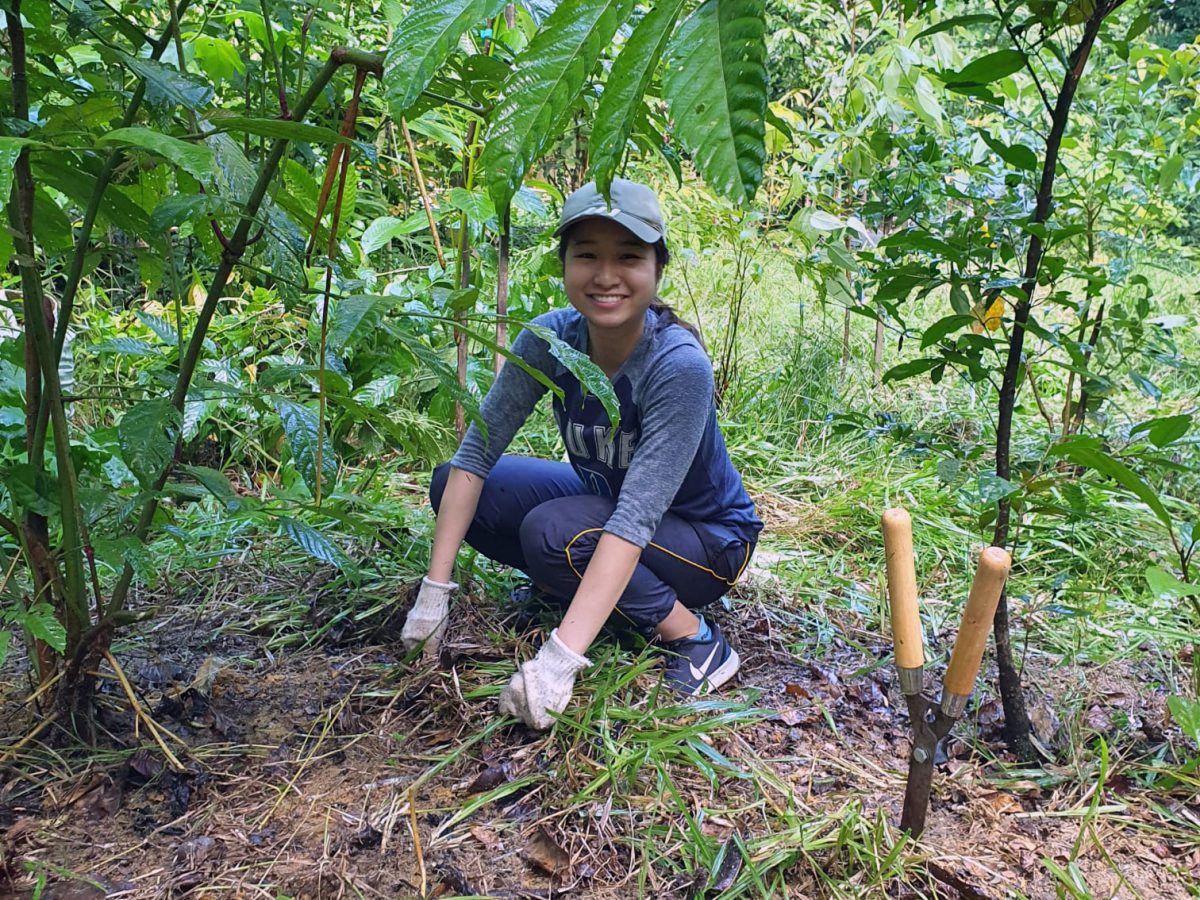
I am a plant killer. In spite of my best efforts, my plants at home have a tendency of giving up on life. (Perhaps that’s what made me such a good candidate for today’s weeding activity). It was only during Circuit Breaker that I took up gardening once more, this time with cucumbers and cherry tomatoes, and I realised where I had gone wrong in the past. I had always assumed that my job was to scatter the seeds, provide water and sunlight, and then sit back and wait for the seedlings to shoot up. I have now realised that these initial bursts of dedication were not enough – my plants need consistent and continued care.

Image credit: Sid Daz
This morning, I joined my fellow volunteers from Jane Goodall Institute (Singapore) to do maintenance work at the Plant for Hope sites at Thomson Nature Park. Armed with hoes and enthusiasm, we wrestled with stubborn weeds that had overgrown the plot, with the goal of reforesting the plot with local tree species (the critically endangered Ailanthus integrifolia), so as to support a larger, local biodiversity of life. The Plant for Hope initiative, launched by Dr Jane Goodall herself when she visited Singapore in November 2019, is one of several Roots & Shoots programmes that hopes to inspire and engage the youth community in Singapore. Under Plant for Hope, 90 saplings were planted in a reforestation plot in Thomson Nature Park, in line with Dr Jane’s broader aim of regenerating forests around the world. Yet, just as my seedlings at home need continued care, simply planting saplings at Thomson Nature Park does not constitute reforestation. The fact that Dr Jane had planted the first tree here is not a guarantee of success nor sustainability. For any of our efforts to be truly sustainable, what is needed is sustained action – for example, our morning of weeding at the park.
The digital native generations of today receive flak for nearly everything they do, particularly on social media platforms. For instance, ‘slacktivism’ and ‘clicktivism’ refer to the act of showing support for a cause by liking or sharing a post online, but not doing anything to change the real world. While I have my doubts about these criticisms, I do believe that our shortening attention spans are making us less willing to follow through with our good intentions. Sometimes I get overwhelmed by the constant news cycle of disaster and doom, and this compassion fatigue makes me afraid to invest too much energy into a single cause, in fears of missing out on another worthy cause. Regardless, I wonder if perhaps the buzzword of sustainability ought to be complemented by its less sexy but no less important sibling – commitment. And in turn, commitment requires collective action. On our own, dedication often becomes tiredness. But together, it is tireless. Whether it is the volunteers at JGIS, the Nature Society (Singapore), or the numerous visitors at Thomson Nature Park this morning who expressed interest in helping out, there are more than enough of us who have this love of nature. It’s up to us, now, to put that love out into the world.

Photo credit: Sid Daz
Real change never happens overnight. Reforesting Singapore with native species will take decades, and in these first few years of growth, our maintenance work is just as important as the initial scattering of seeds. Beyond trees, shaping a more sustainable Singapore requires our continued commitment, not just a single call for change. Indeed, we need to sow the seeds of hope (as Dr Jane advocates in her latest book, titled Seeds of Hope). But hope, once sown, must also be nourished and nurtured. I’ve learnt this the hard way, through wilting and withered plant babies. Yet my recent CB-inspired endeavour, sustained with watering and words of encouragement, shows signs of bearing fruit (cucumbers and tomatoes, to be precise). So, there is hope still!
Written by: Megan Chin
